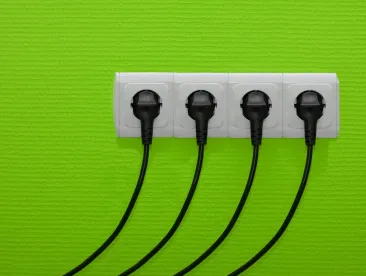Background
On March 2, House Energy and Commerce Committee Democrats formally introduced the Climate Leadership and Environmental Action for our Nation’s (CLEAN) Future Act (H.R. 1512). The introduction of the bill follows the release of draft legislation by the Committee’s Democratic majority in January 2020. The updated version of the bill makes several significant revisions to last year’s draft bill to align with President Biden’s campaign pledges for climate policy. The sponsors of the bill provided a fact sheet detailing updates.
The revised version of the CLEAN Future Act would set national targets to achieve a 50% reduction in greenhouse gas (GHG) emissions from 2005 levels by 2030 and a net-zero GHG economy by 2050. To achieve these targets, the bill would mandate regulatory standards in the power, transportation, buildings, and industrial sectors and authorize $565 billion in federal spending over ten years to enable deep decarbonization.
Below is an overview of key provisions included in the CLEAN Future Act and a description of potential next steps for energy, climate, and infrastructure legislation.
Key Provisions of the Clean Future Act
The following list highlights key policies and programs that would be established by the bill. For a complete review of the provisions included in the bill, please view the Committee’s section-by-section summary of the legislation.
-
Clean Electricity Standards. The bill would establish a federal clean electricity standard (CES) that would require retail sellers of electricity to ensure that 100% of their sales are from zero-emitting generation resources by 2035. This represents an accelerated timeline from the CES provision included in last year’s draft legislation and aligns with the Biden Administration’s target for the power sector. The bill includes an interim requirement for 80% clean electricity by 2030. The bill also phases out the ability of fossil fuel power plants to earn partial credits from 2030 to 2035 and requires accounting for upstream emissions attributable to gas-based generation.
-
Electricity Transmission. The bill includes several provisions aimed at building out the electricity transmission system in support of electrifying a larger portion of the U.S. economy. This includes provisions supporting the integration of renewable energy resources in interstate electric transmission; requiring the Department of Energy (DOE) to establish a program to assist state, local, and tribal governments with transmission siting and permitting; and reforming the Public Utility Regulatory Policies Act to support investment in energy storage and distributed energy resources. While the bill would not establish a carbon price, it would clarify the Federal Energy Regulatory Commission’s (FERC or Commission) ability to approve a carbon pricing regime to be used in setting rates under Section 205 and 206 of the Federal Power Act. It also would require FERC to consider climate impacts in its review of natural gas pipeline and liquefied natural gas (LNG) projects and require all public utilities to place transmission facilities under the control of an independent system operator (ISO) or regional transmission organization (RTO) within two years.
-
Energy Saving Building Codes. The bill would establish national energy savings targets for model building energy codes, enabling adoption of codes that would require “zero-energy-ready” buildings by 2030.
-
Dam Safety. The bill would require that dam and project works meet FERC’s dam safety requirements and that the licensee manage, operate, and maintain the dam and other project works in a manner that ensures dam safety and public safety as part of the project license conditions. It also requires FERC to issue a new license only if the Commission determines the dam and other project works meet the Commission’s dam safety requirements and that the operating conditions of the license are consistent with those requirements. It would also establish requirements for FERC to inform a state in which a project is located when a licensee is required to take actions to repair a dam or other project works following a dam safety inspection, if a licensee who has been so notified fails to take actions to make repairs for a period of five years, or if the Commission takes steps to revoke a license for failure to make such repairs.
-
Greenhouse Gas Emission Standards for Nonroad Transportation. The bill would require the Environmental Protection Agency (EPA) to promulgate new regulations for new nonroad engines including heavy equipment, locomotives, marine vessels, and recreational vehicles, as well as new aircraft.
-
Investing in Zero-Emission Vehicles. The bill would authorize $500 million to deploy electric vehicle charging equipment and support the development of model building codes that integrate such equipment. It would also reauthorize and amend a DOE grant program for projects facilitating transportation sector electrification. The program would be authorized at $2 billion per year through FY 2031 and would receive an additional $2.5 billion per year authorization for large-scale projects.
-
Federal Procurement. The bill would require the federal government to increase the percentage of alternative-fueled vehicles acquired for agency fleets and would set minimum requirements for zero-emission vehicles. The bill would also establish federal “Buy Clean” standards for the use of federal funds. These standards would promote the procurement of building materials and products that were manufactured through low GHG intensity processes (sometimes referred to as “embodied carbon”). The bill would also establish a National Environmental Product Declaration (EPD) database to help verify the embodied carbon of materials and products acquired with federal funds.
-
Environmental Justice and Underserved Communities. Consistent with the Biden Administration’s focus on environmental justice, the bill includes an overarching requirement that 40% of the funds made available under the CLEAN Future Act benefit environmental justice communities. In addition, the bill would create an array of new grant programs and regulatory requirements to support environmental justice initiatives, and institute new environmental justice trainings and requirements within federal agencies. It also directs DOE to assess the challenges and opportunities for deploying electric vehicle charging infrastructure in underserved communities and would establish a DOE grant program to support access to such infrastructure.
-
Clean Energy and Sustainability Accelerator. The bill creates a $100 billion Clean Energy and Sustainability Accelerator program, which would leverage public and private funds to finance clean energy technologies and infrastructure across sectors.
-
Climate Risk Disclosure. The bill would direct the Securities and Exchange Commission (SEC) to require public companies to disclose information about their exposure to climate-related risks; their direct and indirect GHG emissions; and their strategies to manage climate-related risks.
Potential Paths Forward
Following the consideration of the American Rescue Plan Act (H.R. 1319), which would provide COVID-19 recovery and stimulus, Congressional leadership plans to turn its attention to infrastructure legislation. Democrats in Congress are considering two pathways to pass an infrastructure bill. The first pathway is through regular order, which will require 60 votes to pass in the US Senate. House Energy and Commerce Committee leadership has indicated an initial interest in moving the CLEAN Future Act – which House Democrats intend to include in any broader infrastructure package – through the Committee by regular order and intends to hold hearings on the bill in the near-term. Given the bill’s wide scope, moving it through regular order would result in various committees with jurisdiction over the bill holding hearings and proceeding with legislative action on the bill in the coming months.
However, Energy and Commerce Committee Chairman Frank Pallone (D-NJ) did not rule out moving elements of the CLEAN Future Act through the budget reconciliation process if Democrats are unable to garner enough Republican support for an infrastructure bill to overcome the legislative filibuster in the Senate. Using budget reconciliation would lower the threshold number of votes required for passage to 51, but the budget reconciliation process would narrow the range of eligible provisions to those affecting federal spending or revenue. These constraints could complicate the inclusion of regulatory provisions in the CLEAN Future Act, such as a CES. For a detailed review of the budget reconciliation process, please see our recorded Van Ness Feldman webinar titled “Budget Reconciliation: How Democrats May Use it to Advance the President's Agenda.”
While there was bipartisan compromise on the sweeping set of clean energy research, development, and deployment provisions that were included in last year’s Omnibus Appropriations Act, Republicans in the House and Senate have so far opposed the more stringent regulatory standards that are included in the CLEAN Future Act. Following introduction of the bill, Energy and Commerce Committee Ranking Member Cathy McMorris Rodgers (R-WA), Energy Subcommittee Ranking Member Fred Upton (R-MI), and Environment and Climate Change Subcommittee Ranking Member David McKinley (R-WV) issued a joint statement opposing the legislation.
Energy and Commerce Committee Democrats also continue to work on similar provisions to those contained in the CLEAN Act, including clean electricity standards, that may ultimately be included in the bill or replace existing provisions in the bill. Congresswoman Diana DeGette (D-CO) is working to reintroduce CES legislation she authored last Congress, and CES provisions introduced by Senator Ben Ray Lujan (D-NM) while serving in the House last Congress may also be separately introduced.
Meanwhile, other House committees also continue to work on energy and climate legislation that are potential candidates for inclusion in an infrastructure package. Earlier this year, Democrats on the House Ways and Means Committee reintroduced their Growing Renewable Energy and Efficiency Now (GREEN) Act (H.R. 848), which would expand clean energy tax incentives. The House Transportation and Infrastructure Committee is also working on updates to the Moving Forward Act, which passed the House in 2020. The Moving Forward Act included significant funding authorizations for zero-emission vehicle charging infrastructure and other provisions to reduce emissions from the transportation sector (for more information on the Moving Forward Act, click here). In the Senate, Environment and Public Works Committee Chairman Tom Carper (D-DE) has stated his intent to move a climate-forward surface transportation bill out of the Committee and to the Senate floor by Memorial Day.
Outlook
Significant negotiations will need to take place between Republicans and Democrats in Congress to get any climate or infrastructure legislation passed into law during this Congress. To date, both parties are still publicly supportive of a bipartisan path forward. Affected industries, states, and localities will have opportunities to engage with Members and their staff on infrastructure needs in the weeks and months ahead through legislative hearings, written comments to the committees, and other advocacy.








 />i
/>i

